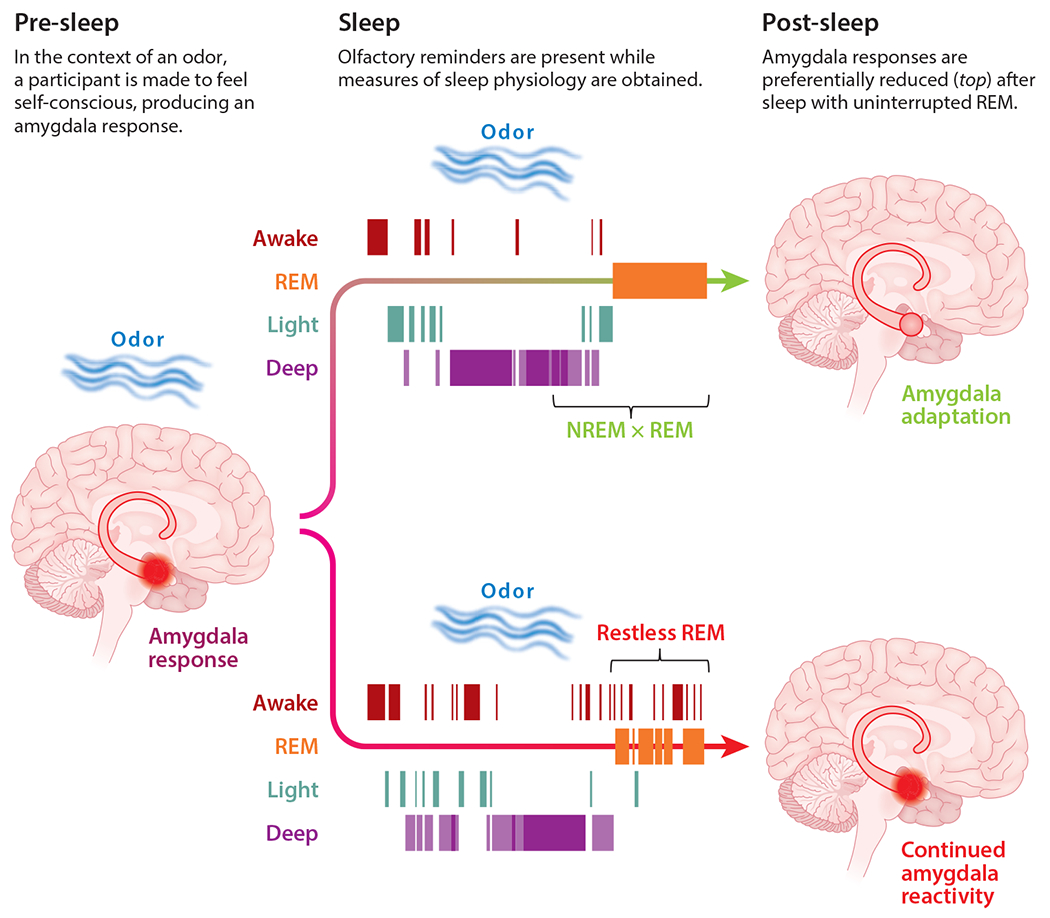Figure 4.

Wassing et al. (2019) used a variant of the targeted memory reactivation (TMR) procedure to examine how participants responded to a distressing episode. Before sleep, participants listened to a recording of their own off-key singing, which elicited a strong amygdala response. During sleep, odors linked with the stressful episode (and a control odor) were presented over multiple stages of sleep. Regardless of the TMR manipulation, two patterns of sleep were observed: sleep with undisturbed rapid eye movement (REM) periods (top) or REM interrupted by brief arousals (bottom). Amygdala responses the next day were reduced to the extent that REM was uninterrupted and also to the extent that spindles were frequent in the non-REM (NREM) period prior to REM. TMR with the stress-associated odor was found to enhance these effects. These findings demonstrate a specific connection between sleep after a stressful experience and future emotional responses. Figure adapted with permission from Wassing et al. (2019).
